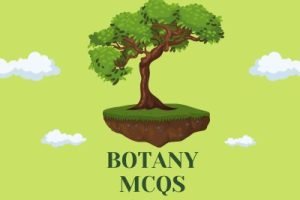MCQs on Fossils
MCQs on Fossils
1. Which of the following constitutes a fossil?
a. A mineralized burrow of an extinct animal
b. An unidentified animal found frozen in a glacier
c. An ant found inside a block of amber, dating back to 110 million years
d. All of the above
2. Stephen J. Gould is a palaeontologist who speculated that, of all the organisms that ever lived on earth, only ________% are still alive.
a. 1
b. 20
c. 50
d. 99
3. Which of the following statements hold true for fossilization?
a. Only small animals are more likely to become fossils
b. Fossilization is more likely to occur in mountains rather than in forests
c. Every organism that dies becomes a fossil
d. None of the above
4. An animal is more likely to become fossilized if:
a. Left exposed to the elements
b. The animal dies at sea and sinks deep
c. The animal is a soft-bodied animal like jellyfish
d. All of the above
5. Which of the following statements is true?
a. Ground water percolation can hinder mineralization of bone
b. Bones usually contain organic as well as inorganic molecules
c. Jellyfish can become fossils as their body contains hard parts
d. None of the above
6. Which of the following can be inferred from studying the fossilized skeletons of animals?
a. Pathologies
b. Life expectancy
c. Growth pattern
d. All of the above
7. Paleoanthropology is the study of _____
a. Fossils of early birds and their ancestors
b. Fossils of early humans and their ancestors
c. Fossils of early fish and its descendants
d. Fossils of early reptiles and their descendants
8. A holotype is a ______
a. A single physical example of an organism known to have been used when the species was described
b. A term used to describe the special type of bones found exclusively in birds
c. A recently formed fossil specimen
d. None of the above
9. Radiocarbon dating can help find the age range of biological specimens no older than:
a. 50,000 years
b. 100,000 years
c. 500,000 years
d. 1,000,000 years
10. The scientific study of the structure of bones, skeletal elements and micro bone morphology are called:
a. Osteology
b. Herpetology
c. Entomology
d. None of the above
Answer key
Question Number Answer
1 d
2 a
3 d
4 b
5 b
6 d
7 b
8 a
9 a
10 a
Tag:MCQs on Fossils



